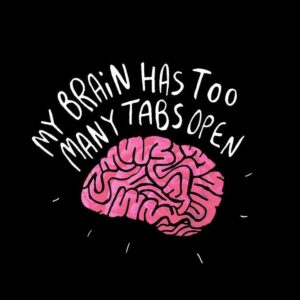Digital Detox: Reclaiming Your Time and Mental Health in a Hyper-Connected World

What Is a Digital Detox?
A digital detox is the practice of stepping away from electronic devices like smartphones, laptops, and televisions to give your mind a break and restore focus. It doesn’t mean giving them up forever. Instead, it’s about setting limits and creating healthy habits. The aim is to reduce digital overload and spend more time being present in the real world.
Why You Should Try a Digital Detox
1. Better Sleep

Looking at screens before bed can disturb your sleep. Devices give off blue light, which can stop your body from producing melatonin. This hormone helps you fall asleep. Reducing screen use in the evening can improve your sleep and help you wake up feeling rested.
2. Less Stress and Anxiety

Constant notifications and news updates can raise stress levels. Checking emails, scrolling through social media, and reading headlines all the time can make us feel anxious. A digital detox allows your brain to slow down and focus on the present.
3. Improved Focus and Productivity

Interruptions from notifications break your concentration. This makes it harder to stay focused on tasks. By cutting down on screen time, you can boost your attention span and get more done in less time.
4. Stronger Relationships

When you’re glued to a screen, it’s easy to miss real moments with the people around you. Putting down your device helps you connect better with friends and family. It allows for real conversations without distractions.
5. More Time for Hobbies

Without the constant need to check your phone, you’ll have time for things you enjoy. You could go for a walk, read a book, or cook something new. These activities can help you feel relaxed and happy.
How to Start a Digital Detox
1. Set Clear Goals

Think about what you want to change. Do you want to stop checking your phone before bed? Would you like to spend a day without social media? Set simple, realistic goals to guide your detox.
2. Create Tech-Free Zones

Pick certain places in your home where you don’t use any digital devices, so you can relax without distractions. Common places include the bedroom and dining room. This helps you build spaces where you can relax without digital distractions.
3. Establish Screen-Free Times

Decide on parts of the day when you won’t use screens. For example, during breakfast or the hour before bedtime. Setting a schedule helps you stay consistent and avoid slipping back into old habits.
4. Replace Screen Time with Offline Activities

Think about what you can do instead of scrolling. Go outside, try a new recipe, or work on a puzzle. Finding enjoyable things to do without a screen can make your detox more rewarding.
5. Track Your Progress
![]()
Keep a simple journal or use a tracker app to note how much time you spend on devices. Pay attention to how you feel on days when you reduce screen time. This can motivate you to keep going.
Tips for Sticking With It
Use Tech Mindfully:
Use technology in a thoughtful way. Some apps can help you keep track of your screen time or support your mental well-being. Use tech to support your goals, not distract from them.
Stay Consistent:
Try to include digital detox habits in your daily life, not just once in a while. Regular breaks make a big difference over time.
Ask for Support:
Share your goals with family or friends. Having their support can make it easier to stick with your plan. They can help keep you on track and may even want to join in.
Final Thoughts
With life moving so quickly, it’s no surprise that being surrounded by screens can sometimes feel too much to handle. A digital detox can give your mind a rest, reduce stress, and help you enjoy life more fully. It’s not about cutting off technology completely but using it wisely. By setting limits and making time for real-life connections, you can find a healthier balance.

